Indian wedding is a grand affair where every ritual, pre- and post-wedding holds special importance. That is why every possible measure is taken to ward off the Buri Nazar (evil eye) to make sure that the newlyweds have a blissful life together. It really doesn’t matter whether you are doing the marriage in the best wedding venues in Delhi or within the walls of your home, every wedding has attached with it, some customs and traditions that may have their roots in an old-wives tale or superstition, or it could be just something that might have started as a fun wedding game, a generation back and exists as a popular custom to date.
Every single custom and practice in a wedding ceremony has deep philosophical and spiritual significance. Being unique amongst most other traditions throughout the world, Hindus adhere to these set of rituals and continue on the traditions of marriage.
Go through the below facts and enjoy the Hindu marriage facts you probably never knew about Hindu weddings.
- Chooda
The chooda is necessary for the Punjabi culture but nowadays it is a fashion to wear this chooda. And there is a period of time till when you have to wear it. It is worn to bring good luck to one’s life so till one month you can’t take it off. This looks really beautiful although but still, no one can give the reason that those who don’t wear it are they not lucky. But as said this is the beauty of Hindu ritual which has such amazing rituals.
- Dowry
Although dowry is a sin still this is a part of any marriage ritual. The bride’s parents have to give some or other thing to the groom, somewhere it is because of the demand and sometimes it is because of love. But actually, no one thinks that if two people are earning why they will need these things and if the bride is not earning, then in the groom’s house he doesn’t have any necessity then why he is getting married. So this ritual is definitely not good.
This is Funny because NO one knows Why this has to happen!
- Bidaai
Coming to this, the bride has to cry on her Bidaai no matter what! Nowadays girls have become so practical and logical, that they are excited to start their new journey of life and they don’t feel like crying. Then it is the problem because many people will ask why is she not crying! This is really a funny ritual as if your parents are emotional and you are not then this will feel a little odd.
- Right Footed
A commonly followed Hindu ritual, after the wedding ceremony the bride arrives at her husband’s home and is ceremonially ushered in by her mother‐in‐law.
The bride must take care to enter the threshold with her right foot first, which she uses to gently knock over a vessel filled to the brim with rice that has been placed there strategically in order to ensure good luck and plenty for her new family.
- Deeper the Colour
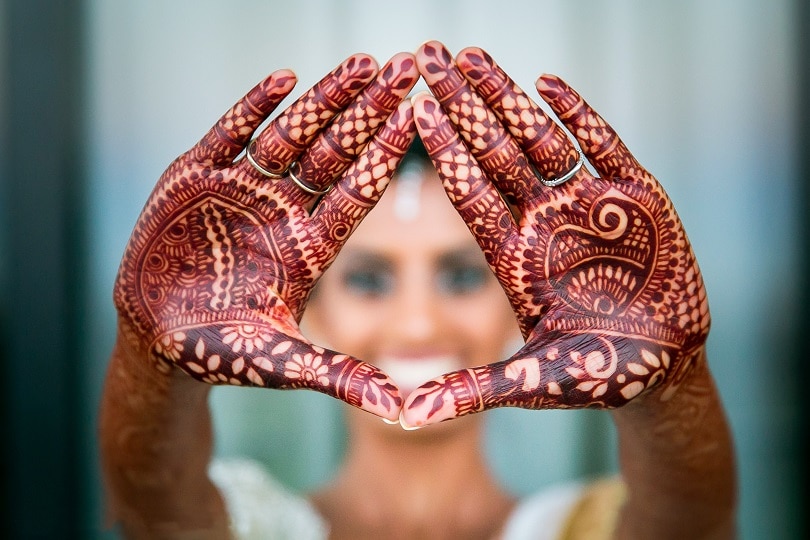
An Indian bride applies henna or mehndi to her hands and feet before the wedding. The belief is that the deeper the final colour, the more she will be loved by her husband or some say, her mother‐in‐law.
She is also forbidden from doing any housework as long as the colour of the bridal mehndi remains on her hands, making the longevity of the henna all the more desirable!
- No Black and White
As these are considered colours of mourning, it is considered inauspicious to wear black or white to the Hindu wedding. Different shades of white are however quite popular today and many modern brides choose white lehengas or sarees with colourful borders and embellishments. Neither complete black nor complete white should be worn by the bride, groom or any attendees to Hindu weddings.
- Significance of Bangles

Bangles are such an important part of an Indian wedding. Normally, the wrist portion is in constant activation on any human. Also, the pulse beat in this portion is mostly checked for all sorts of ailments. Its constant friction increases the blood circulation level as the Bangles used by women are normally in the wrist part of one’s hand. Furthermore, the electricity passing out through the outer skin is again reverted to one’s own body because of the ring-shaped bangles, which has no ends to pass the energy outside but to send it back to the body.
- The significance of Toe Rings
Wearing toe rings is not just the significance of married women but there is science behind it. Normally toe rings are worn on the second toe. A particular nerve from the second toe connects the uterus and passes to heart. The uterus is strengthened when you wear the toe ring on this finger. Regulating the blood flow to the uterus and regularizing the menstrual cycle, it keeps a woman healthy. As Silver is a good conductor, it also absorbs polar energies from the earth and passes it to the body.
- Sindoor or Vermillion
Carrying a physiological significance not many know about, the application of sindoor by a married woman is a must. This is so because Sindoor is prepared by mixing turmeric-lime and the metal mercury. Due to its intrinsic properties, mercury, besides controlling blood pressure also activates sexual drive, one reason, why widows are not allowed to put sindoor.
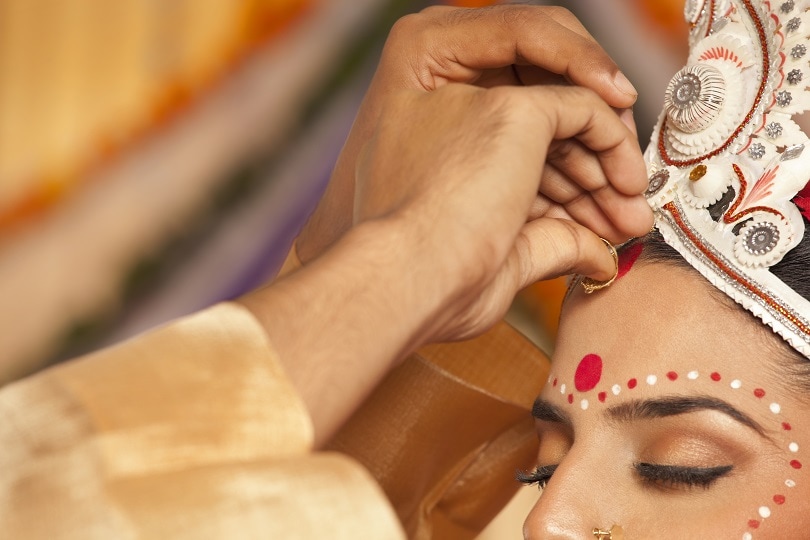
Since all our feelings are centred at the pituitary gland, sindoor should be applied right up to it for best results. For removing stress and strain, mercury is known to be a good component.
- Fishing the Ring
Another popular wedding ritual, one of the most interesting Hindu marriage facts is ‘Aeki-Beki’. It is very popular between Gujarati community. A mixture of water, milk and vermillion (Red Color) is made and a tray is filled with it along with some coins and a ring. In order to find out that ring, the Bride and Groom are given 7 chances. The more dominating personality in the wedding and one who is predicted to rule the household will be the one who will find that ring.
- Handing the Knife
Some Hindu families practise the custom of giving the bride a knife or some other sharp metal object to keep with her at all times from the time she gets engaged to the wedding day. This is to protect her from any unwanted male attention or advances and is a ritual about Indian wedding not many people know about.
- Knotted String Game
Sikh families have after wedding games to welcome the new bride to their family. One of them is the knotted string game, where the sister of the groom ties several knots in a long string and the bride and groom are supposed to use one hand each and work together to try open the knots. It is believed that the sooner they untie the knots, the smoother their wedded life will be.
- Pulling Nose of the Groom
It is a ritual where the groom is welcomed by his mother-in-law, who first performs an aarti and then playfully pulls the groom’s nose. This is common in Gujarati weddings and is called Ponkvu or Ponkhana. This is a playful way for the bride’s family to remind the groom that he has come to their door to marry their daughter and he has to learn to be humble and grateful.
- Earthen Pot Test
It’s a ritual where the mother-in-law places an earthen pot on the newly wedded bride’s head after the wedding. This is commonly done in Bihar. After this, more earthen pots are added to make a pile. The bride is expected to balance them and touch the feet of the elders in the house simultaneously. How well a bride can adjust to her new family and the responsibilities of the new life is symbolised by the balancing of pots.
- Tearing off Grooms Clothes by his Relatives
The Sindhis perform a ritual called Saanth before the wedding. The priest ties an anklet around the right foot of the bride and the groom in their respective homes. After this, seven married women pour oil on the bride and the groom’s head. Then both of them have to wear a new shoe on their right foot and break an earthen lamp with it. This is considered as a good omen. To end the ceremony, the groom’s relatives tear off his clothes to ward off the evil eye.
- Hiding the Groom’s Shoes
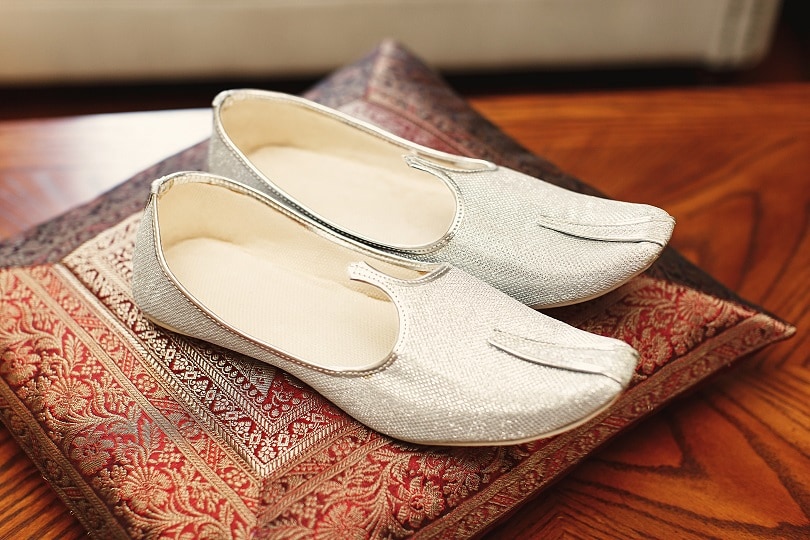
Being the most fun ritual, the sister-in-law hides the shoes of the groom and asks for a hefty ransom in return for the shoes on the day of the wedding. The friends and cousins of the groom try their best to find the shoes. A great deal of attention is focused on this event. As no groom would want to disappoint his bride’s sister on this day, the sister-in-law usually gets her price for, irrespective of the conclusion.
- Bride Kicking Rice Filled Vessel
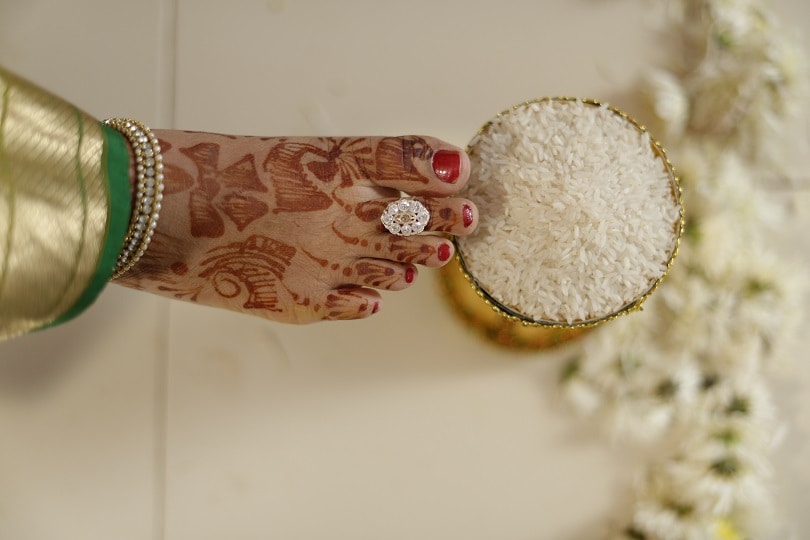
There is a practice of the bride entering the groom’s home for the first time in most of the Indian marriages. A vessel filled with rice or wheat (depending on what is the staple diet of the people) is placed at the doorstep in this particular ritual.
She enters the home after kicking the vessel with her right foot. The act in itself symbolizes the abundance and prosperity the bride is getting to the home she is entering, as right foot is considered sacred and auspicious. It is one of the most popular Hindu marriage facts and is followed with great significance.
- Covering Groom’s Face with a Veil
The groom’s face is covered with a veil made of flowers called the Sehra in north Indian traditions. The Sehra is tied to the turban he wears. In order to prevent the groom from becoming victim to any bad looks or the evil eye, this ritual is followed without fail. Someone from the bride’s side lifts this veil just to ensure that it is not some impostor, just before the betrothal!
- Kanyadaan
Another Indian wedding tradition and ritual is that the bride is “donated” to the groom by her parents. This is considered a very auspicious ritual and the bride’s parents are blessed to be able to conduct this ceremony. Donating a cow and a daughter are said to bring great fortune to the family and hence, this ritual is one of the most important ones in an Indian wedding.
- Let the ‘Kaleere’ Fall
The brides wear Chooda on which her family members and friends tie Kaleerein (red and golden ornaments) in the north Indian customs. The bride moves her hand over the head of the unmarried girls (or boys sometimes) and shakes her hand. It is said that if Kaleerein falls on someone’s head, then that girl will be next in the line to get married.
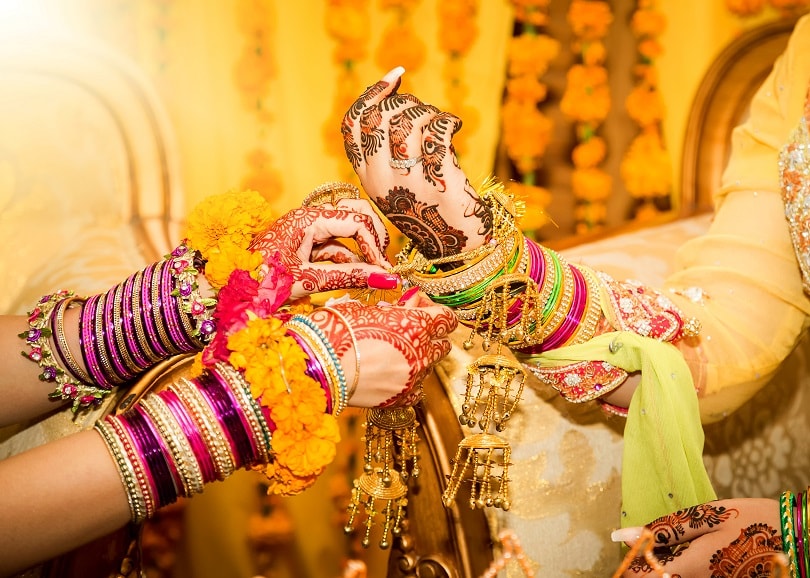
Filled with energetic colours and romantic atmosphere, Indian weddings are well known for prosperity and lots of merriment. It’s the only occasion that brings family, friends and neighbours together under one roof for one day. Definitely, it’s one of the most important days for both bride and groom and must be followed with all the rituals to make the bond the most sacred one.
Well, these are just some interesting Indian wedding superstitions. If you believe in them, there’s no harm to practice them for a day. Above all, we just want to say – Marriages that are based on love, trust and understanding will always last a lifetime.
- Top 16 Things to do in Kolkata in 24-hours - July 25, 2019
- Savour These Delicacies While in Bali for a True Gastronomical Treat! - May 29, 2019
- A Seasonal Guide to Sri Lanka – The Pearl of the Indian Ocean 2019 & 2020 - May 24, 2019
- Six Experiences You Mustn’t Miss in Sri Lanka for A Fabulous Trip! - May 24, 2019
- 5 Bazaar Ramadan terbaik di Kuala Lumpur. - May 15, 2019
- Planning to Visit Ladakh? Here is a Seasonal Guide to Help You Plan Your Trip - May 8, 2019
- Visit These Places in Bali For an Exciting Vacation in The Tropical Island! - May 7, 2019
- 8 Best Places to Spend Your Vacation in the Hills of Himachal Pradesh - April 17, 2019
- Places to Visit in Thailand - April 16, 2019
- Want to Visit Bali at Minimum Cost? Follow Our Guide to Travel Bali on a Budget! - April 12, 2019

